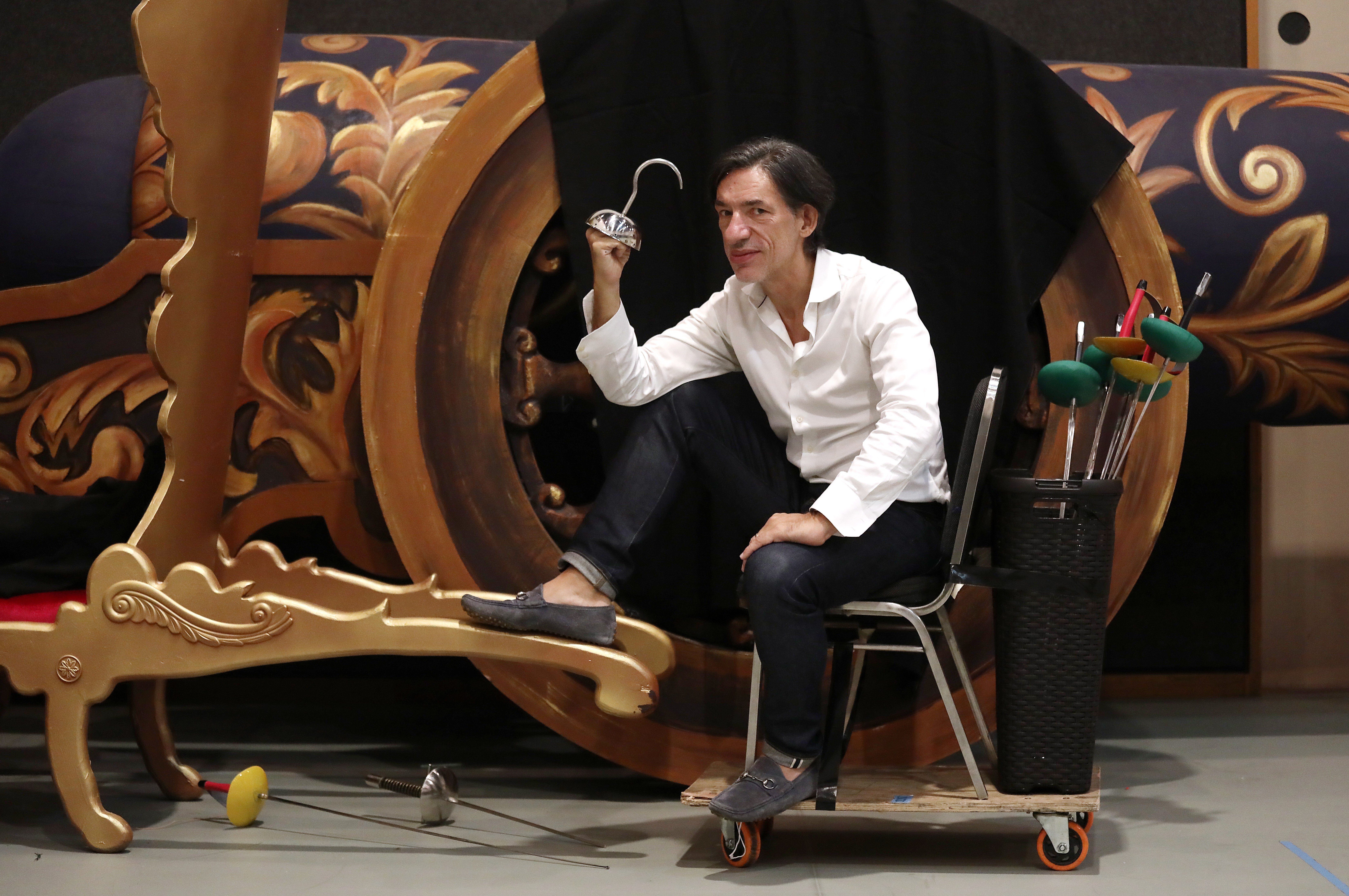
- Webre is presenting a fresh take on J.M. Barrie’s Peter Pan as part of the ballet’s anniversary celebrations
- The seventh son of a Cuban-American family, he wanted to be a priest and was set for a career in law until ballet found him
Earlier this year, in the relatively merry month of May, Hong Kong Ballet released a video filmed against a backdrop of the city’s landmarks. The idea, as the ballet’s artistic director, Septime Webre, said at the time, was to create a “celebration of Hong Kong as a beautiful place”. The dancers, clad in pastels, resembled a posse of lithe macarons that sweetly cavorted on the Star Ferry, on the Tsim Sha Tsui waterfront, on the pedestrian crossing beneath the Bank of China and on a basketball court – all to the orgasmic soundtrack of Maurice Ravel’s Boléro. You couldn’t watch that two-minute film without smiling.
The video, made by Washington-based Design Army and directed by Dean Alexander, was commissioned to promote Hong Kong Ballet’s 40th anniversary season. It officially kicks off on August 16 with the Asian premiere of Peter Pan, choreographed by Webre.
One recent morning, as a tropical storm loitered indecisively off the coast, the ballet was supposed to have its first run-through by Cast A in a rehearsal room at the Hong Kong Cultural Centre, in Tsim Sha Tsui. By the time everyone is assembled at 11am, however, the Observatory has announced it may issue a typhoon signal No 8 before 2pm. Webre, who’s been in Hong Kong since 2017, is consulting Hong Kong Ballet’s weather protocol. Precious though rehearsal minutes are, it’s probably best if the Peter Pan cast doesn’t have flying lessons courtesy of Typhoon Wipha.
Just behind him, wearing a bandana and swishing the air with a wooden sword, is Nicolas Yu Man-hin, who is 14 and has the role of Michael, the Darling family’s youngest child. He’s been attending ballet class since he was three, is about to begin Year 10 at West Island School and has just won a gold medal in July’s Hong Kong Challenge Cup dance competition along with title of Best Performer in Ballet (Senior Division). His prize is a dance course next summer with Ballet West, which is based in Taynuilt, in Scotland. As it happens, that’s about three hours’ drive from Kirriemuir, where J.M. Barrie, who created the character of Peter Pan, spent his childhood.
Creative: Design Army | Director: Dean Alexander | Courtesy of Hong Kong Ballet
“A lot of integrating dance and school life is about time management,” Nicolas says, of his own childhood. “It’s one of the really important things in managing your life.” He’s already appeared in unnamed roles in other Webre-choreographed works – The Great Gatsby and Alice (in Wonderland) – but this is an emphatic leap forward. Asked to describe Webre, he replies, “Creative. Brilliant. He’s given a lot of children opportunities to perform. I love his ballets. He’s pretty epic.”
“Places! With feeling!” cries Webre and as a book titled Peter Pan is opened by the Darling children, he murmurs, “We can see a shadow.” In fact we can’t, though it will be apparent to audiences in the theatre; in the same way, there’s a long static pause later on while the music plays and Webre announces, “You’re still flying!,” which the Darlings will be, above the actual stage. Nicolas lifts his arms, exultant at the very thought.
The rehearsal moves briskly along (“Lost Boys – jump!”). Occasionally, Webre’s accent has the drawl of America’s Southern states. (“Y’all should play with the dawg.”) Sometimes, Tang Min, the ballet mistress, translates his instructions into Mandarin. For Webre, ballet itself is a language. As Tiger Lily dances her solo, he remarks, in an aside, “Quoting a little Balanchine there”, referring to American choreographer, George. Webre wants what he calls “Balanchine’s long-legged power” to convey the idea of a strong female who doesn’t need a man to define herself.
On the whole, though, this is essentially a story about two males: one forever young, one middle-aged with a fear of death (especially by ticking crocodile). Cast A’s Peter is danced by Shen Jie, whose floppy-haired boyishness and soaring feats – applauded by other dancers in rehearsal – convey the lovable self-posturing of adolescence. He’s the permanent man-child whom Barrie based on his older brother, David – dead, of a fractured skull while ice skating, on the day before his 14th birthday.
And there’s Mr Darling, the authority figure who morphs – Freudian alert – into Captain Hook. That convention dates from the first performance of the play Peter Pan, or The Boy Who Wouldn’t Grow Up, in 1904. (Apparently, it had nothing to do with Freud and everything to do with finance, one actor being cheaper than two.) Barrie’s Captain Hook was an old Etonian. Webre’s Hook, however, makes his entrance on a fabulous red-and-gold throne that evokes New York’s Studio 54 in its 1970s heyday. He is performed, with sneering relish, by Luis Torres, who’s from Puerto Rico.
Torres has already danced the role, in 2014, when he was with the Washington Ballet, where Webre was artistic director from 1999 until 2016. Last year, Torres joined Hong Kong Ballet as ballet master. Has Webre changed much in the interim? “Yes, the company here gets financial support so he seems more settled, more creative, more present,” says Torres. “He’s not always saying, ‘I have to run to see these people.’ It’s good to see that.”
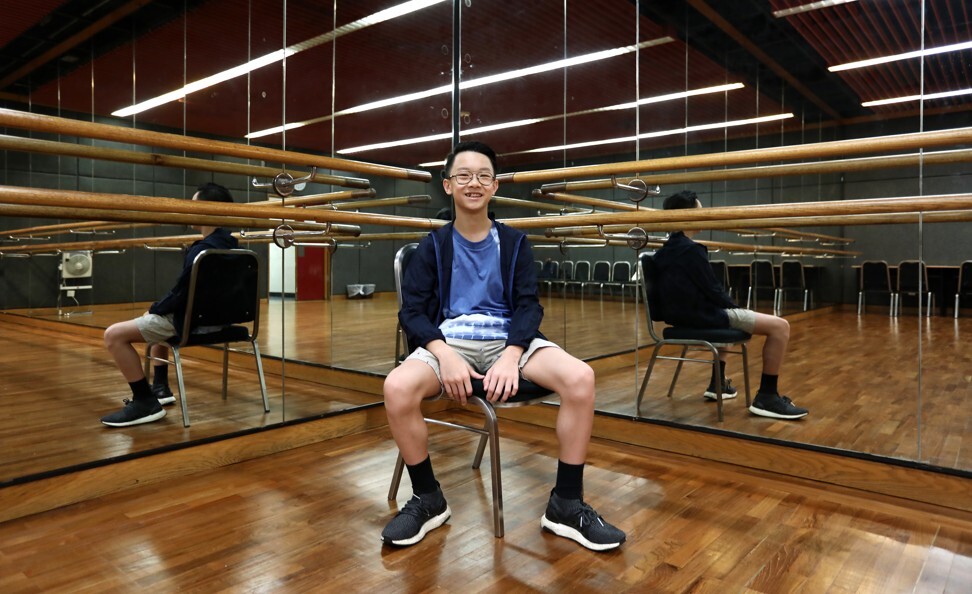
By now, the Observatory is advising people to start their journey home. (When I ask Torres where home is, he replies, “Home is still Puerto Rico!”) Webre lives in Mid-Levels and decides to take the Star Ferry back to Hong Kong-side. He was born in New Orleans, he says, and he’s used to hurricanes. On our way through the squalls, he asks if I’ve watched the video and I say, yes, at least a dozen times. As he puts it, a little ruefully, later, “It’s so optimistic.” But today, riding the waves as the storm approaches, there are no dancers on the ferry, no bright colours and the city feels harried.
Septime is the seventh of nine children – the clue to family placement is in the name. (Septimus means “seventh son” in Latin.) His mother, who was Cuban, was a seventh daughter. Her family had been in the sugar industry for seven generations. His father came from an old Louisiana family that had also been in sugar for seven generations. After revolution came to Cuba, in 1960, and the sugar industries were nationalised, his family left with US$5 hidden in a child’s shoe. Septime, born in 1961, was the first of his siblings not to live on the island.
While doing research for this piece, I happened to come across a story about the 14,000 Cuban children who were sent by their parents to the United States in the early 1960s to escape Fidel Castro’s communist government. That mass exodus, by mostly unaccompanied boys, was called Operation Peter Pan.
“Oh, I’ve known many Peter Pan children,” says Webre, a couple of days after the storm, in a Maxim’s Cafe at the Cultural Centre. “There’s a whole generation of young boys who were sent over in 1960 or 1961, and their parents didn’t show up until 1969, 1970. A good friend of mine was a Peter Pan boy, he’s a Jesuit priest. A lot of those kids became priests because it was sponsored by the Catholic Church.”
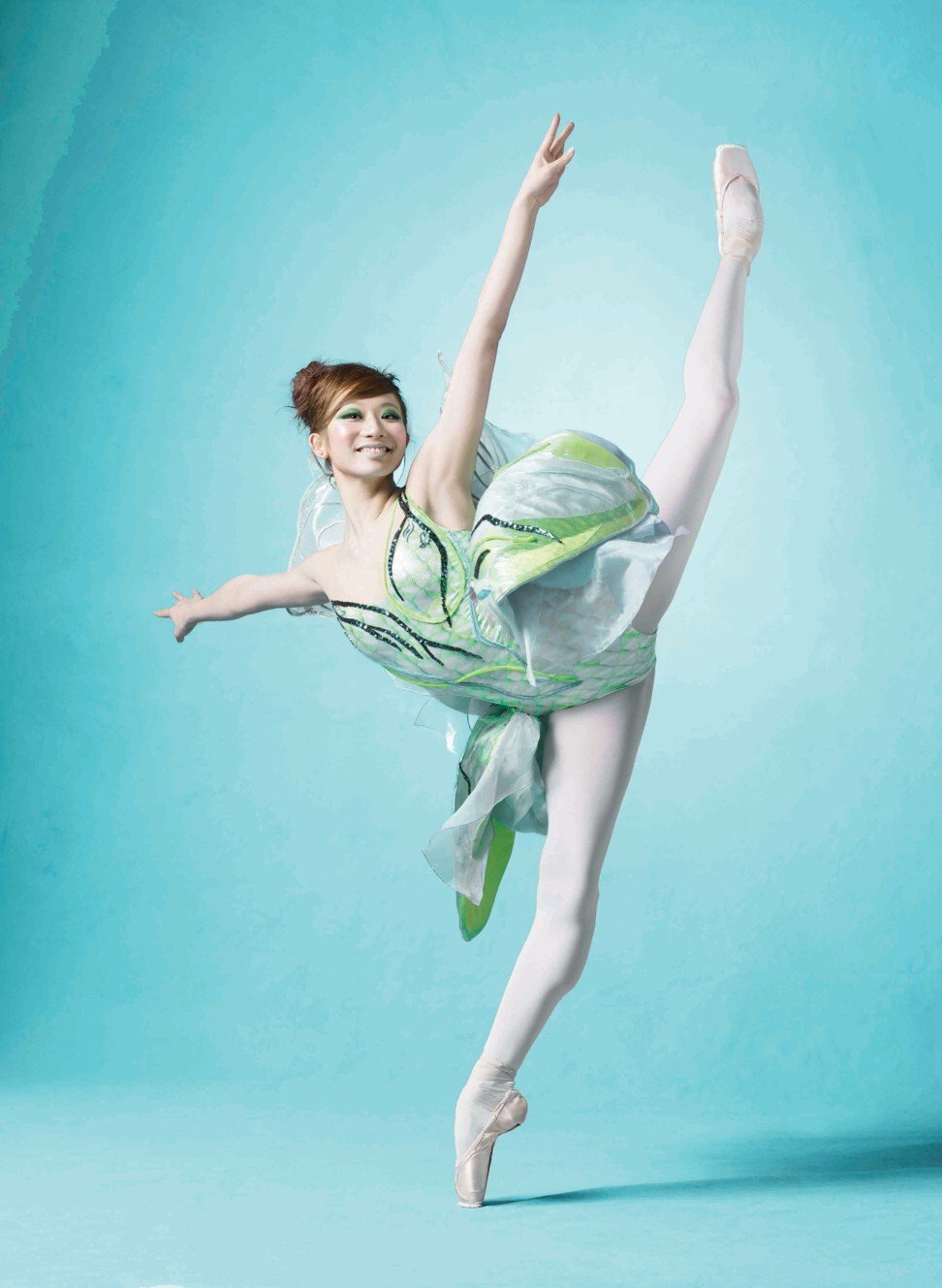
Webre was lucky. He wasn’t a Cuban lost boy although he did spend about a decade – from six to 16 – telling his family he was going to be a Jesuit priest. His maternal uncle held a senior position with the Jesuits in Rome, Italy. “Then I realised that much of what I had believed was a metaphor and metaphors can be good but I’m not going to give up my life to one.”
The family lived in the Bahamas until he was 12, when they made Brownsville, Texas, their base. Septime’s father managed sugar mills in Sudan and then Ivory Coast, where the children also spent considerable time. Webre is the only person I’ve interviewed who’s been attacked by a baboon: it grabbed his arm through a fence in a village. As we’re checking out the now-faint puncture marks, he says, cheerfully, “The thing that was hardest was my mother and all of my siblings screamed and ran for cover and I had to wrestle myself away. If I were a weaker character, I’d have to go into therapy for abandonment issues.”
This is, sort of, a joke, because he’s so tightly bonded within his clan. The eldest of his eight brothers is two decades older than Webre but the five youngest (including Jane, the only girl) were born within seven years of each other.
“We were a cohort that really raised each other. Four of us went to university [in Texas] together and three of us moved to New York and lived together in our early 20s, so we were like uber-siblings.” He laughs, a nice, faintly dirty, heh-heh-heh that must gladden family gatherings. When I ask if it’s tough being so far away, he says they have a sibling WhatsApp group; this morning, there were 96 messages.

As a child, he knew the story of Peter Pan, not because of the Cuban operation but because he was a reader. He enjoyed making words perform, they were vehicles for theatrical expression. When he was 10, he wrote a play called “The Case of the Recurring Ennui” for Jane – “my muse” – who was then aged eight. She was obliged to recline on a red, crushed-velvet bedspread and speak the immortal first line: “Oh, I’ve never been so ennui in all my life.” Captain Hook’s red-and-gold throne can surely be traced back to that moment.
At 13, he followed Jane into a Brownsville ballet class and liked what he found. “But in Brownsville, Texas, or Khartoum, Sudan, one couldn’t imagine a career as a professional ballet dancer. I’d never seen a professional ballet performance.” What was visible, however, was the marching band at the Brownsville football game on Friday nights. He learned the trombone and, at 15, having wheedled the band director, staged a half-time show round the theme of Disco Inferno.
“My choreography is informed by my experience in the marching band to some degree,” he agrees, now. “The point is I didn’t distinguish between baton twirling and classical ballet and plays with my sister. You’re just a kid learning to do what you’re drawn to.” (Jane, for her part, went on to be a lawyer.)
His parents were not, he says, the kind to whom he could announce, “Mom, Dad – I’m going to be a ballet dancer!” But when he went to the University of Texas to study history and pre-law, it happened that British dancer Stanley Hall was teaching ballet as part of the university’s physical education programme. “My body didn’t mature until quite late and I worked harder than anyone else,” he says of catching up on his lost dance years. “I was just driven.”

When he got into law school, he deferred, took a one-year contract with Ballet Austin and on day five decided he was going to move to New York once it was finished. Which he did. What did his parents say? “Actually, because we were nine and there was so much distraction, my parents were surprised. But because, technically, I was deferring that meant I was going to go back to law school […]”
Even when he was 30, and artistic director of the American Repertory Ballet, in New Jersey, his mother was still fretting, during Sunday-evening phone calls, about his career prospects. Webre, who’s a good mimic, adopts a Cuban accent: “Darling, I read that New York Times article on your dance, so nice, but you could still go to law school at night.” He laughs. Heh-heh-heh.
By then, he’d started creating his own works. As well as being the 40th anniversary of Hong Kong Ballet, 2019 is his 30th anniversary as a choreographer. His first work, called D-Construction, had a percussion score by John Cage, was written for four men, and sounds, frankly, brutal. It was so difficult that, seven minutes into its opening night, one of the dancers threw up in the wings before returning for his duet.
His second opus, Shoogie: The Tail of My Wiener Dog, premiered in 1991, and tells the Texan tall tale of Bertha Mae Keel’s dachshund who drinks an excess of water, explodes into canine gobbets and is returned to Bertha Mae’s trailer in various Tupperware dishes and covered casseroles by her neighbours. On Hong Kong Ballet’s Facebook page, there’s a video of Webre in which he talks about “living life with gusto”. The subtitles transcribe his words as “living life with guts out”, which I initially assumed was a mistake. Now I’m not so sure.
These early works seem such outliers I’d thought they might not contain his soul. But no. “Those did have my soul,” he says, emphatically. “There was the energy and creativity and the vocabulary, and how I organise groups, and what kind of visceral experience I want dancers to have. Those things are encoded in all the work.”
When, however, he became artistic director of the American Repertory Ballet, in 1993, and then the Washington Ballet, in 1999, he recognised that he needed “to make ballets to grow the box office, grow the ballet and challenge the artists”. At the same time, there was Sunday-night input from his mother. “She’d say, ‘Oh my darling, so experimental. Why don’t you make a preeety ballet?’”
Romeo and Juliet fit the bill. He created his own contemporary version – “influenced by the [Kenneth] MacMillan and [John] Cranko versions” – during his first year at the American Repertory Ballet. “I wanted to make a ballet that would make the company better than it was at the time.” It also helped him find his choreographic vocabulary. “I discovered what I do in my job. I’m a storyteller.” That’s why he likes to adapt literature. The Sun Also Rises, The Great Gatsby, Alice’s Adventures in Wonderland, Peter Pan: he can write their narratives with physical language.
At the moment, he’s working on a version of Romeo and Juliet for Hong Kong Ballet, due to premiere next June. A story of adolescent love, set amid a divided society, a Verona skating on the thinnest of ice … Will he have a protester Romeo and a policeman’s-daughter Juliet? “I haven’t quite figured it out,” he says, carefully.
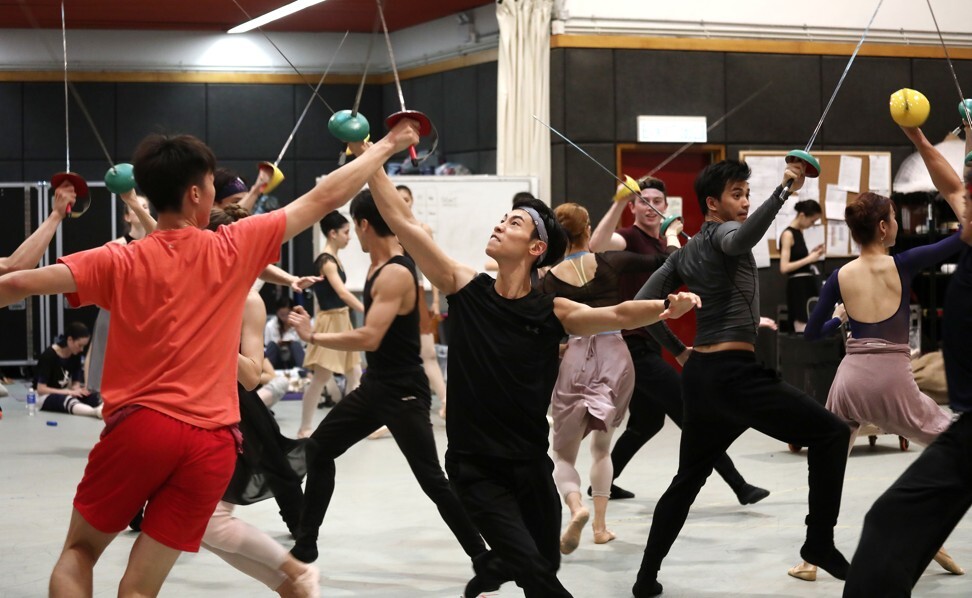
He’d already decided, before current events, that the setting would be 1960s Hong Kong. The date seems to have been visually influenced (he is a fan of Wong Kar-wai) though, of course, 60s Hong Kong was also an era of political unrest. The art of symbolism may not have encouraged priesthood but his choreographic soul is happy to note, now, that “old times are metaphors for today”.
Why did he come to Hong Kong? When he left the Washington Ballet after 17 highly successful years, he said he wanted to focus on his choreography. “That is correct.” Another laugh. “It seemed like it was time for a new adventure.” Which sounds exactly like Peter Pan. “I’ve got Peter Pan syndrome! I’m a kid! I’ve settled down now but I had a wicked Peter Pan syndrome.”
Has he ever had a case of recurring ennui? “I guess …” He’s a rapid talker and walker – the very embodiment of Never Standing Still, Hong Kong Ballet’s logo – but, for the first time, he pauses. “I was born with a happy gene and I was born with enthusiasm. In truth, the kernel of why I thought to leave Washington Ballet was perhaps because … oh my goodness, I wasn’t bored, I was having a great time, I had a great life. But I didn’t feel …” Another pause. “I guess one could call it ennui. Ennui has a jaded connotation and I’m not a jaded sort. And the American work-ethic is strong in me.”
He conducted his Skype interview with Hong Kong Ballet’s board members in a jacket and tie (visible) and bathing trunks (invisible). You could view that as – yes – a metaphor for what he’s done here since his arrival: he’s retained the ballet’s traditional appearance while giving it a funkier, more accessible, subtext. Design Army’s branding campaign has been a huge success; subscriptions are up 130 per cent and he’s taking dancers to unexpected corners of the city.
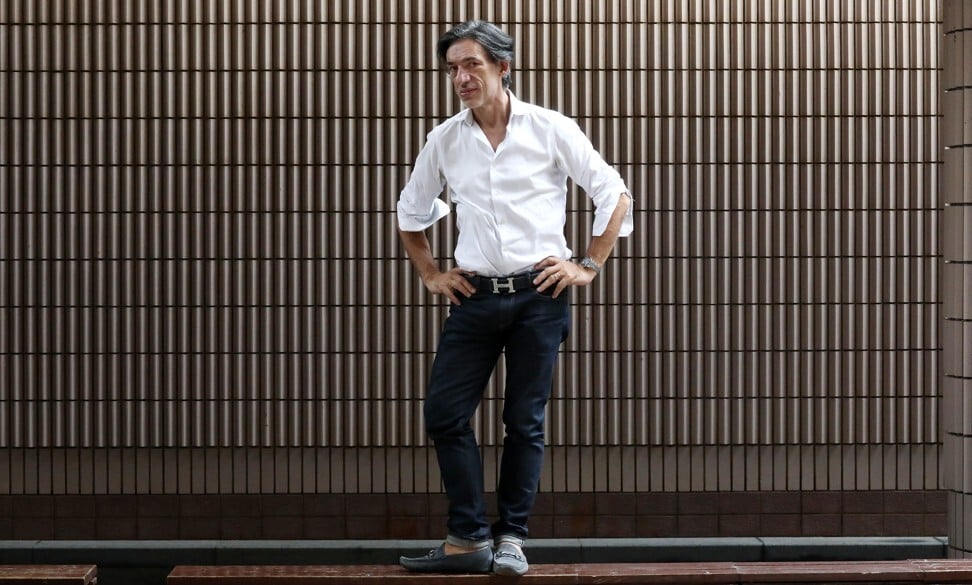
The week before we met, he’d launched a programme at Hong Kong Central Library, in Causeway Bay, to bring ballet storytelling to libraries. He’s already worked with local visual artists; this autumn, he’s pairing young choreographers with fashion designers. He can spend time devising ways of connecting with the city because about 65 per cent of his budget comes from government. “That is a lovely, lovely, lovely change.” (Context: in Washington, US$80,000 of his US$12 million budget came from the federal government.)
As proof of how committed he is to the city – “Hong Kong is home” – he’s moved some of his taxidermy collection here. In the Mid-Levels flat he shares with his husband, Marc Cipullo, who teaches at the Hong Kong Gifted Math Academy, there’s a half-bodied African hyena, several white-tailed deer, an ostrich, some ducklings. (No baboon though.)
When I ask for assistance with the psychology of this, he laughs. “It started as ironic, as a kind of funny gesture – I’m from Texas! Of course I’ve got taxidermy! Now they’re inspiring objects of beauty.” That are dead. “Well, it’s kind of like cremating your pet poodle and keeping the urn above your bookshelf.” Now it’s my turn to laugh, tickled by the visual absurdity, just as he intended. “I don’t psychoanalyse it too much,” he says. Like his version of Peter Pan, there’s no real shadow to the story; and soon, in a rush of air, he swoops off to his next meeting.
Peter Pan will run at the Grand Theatre, Hong Kong Cultural Centre, Tsim Sha Tsui, from August 16 to 18, and at the Auditorium, Sha Tin Town Hall, Sha Tin, from August 23 to 25.
